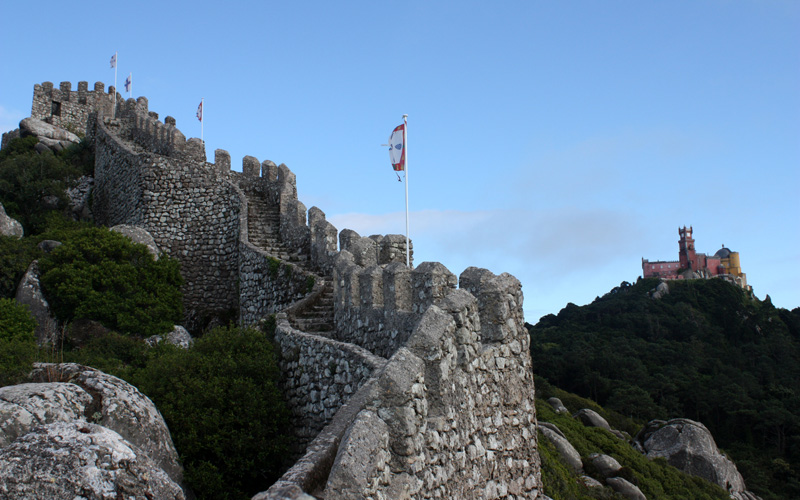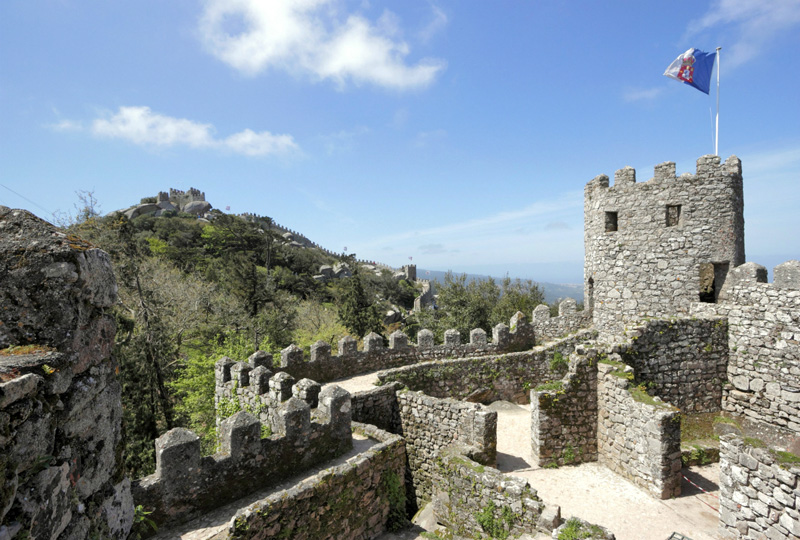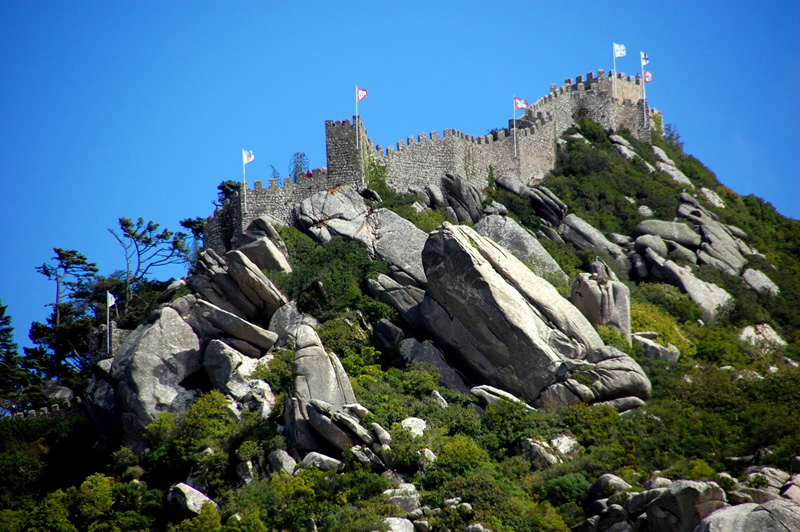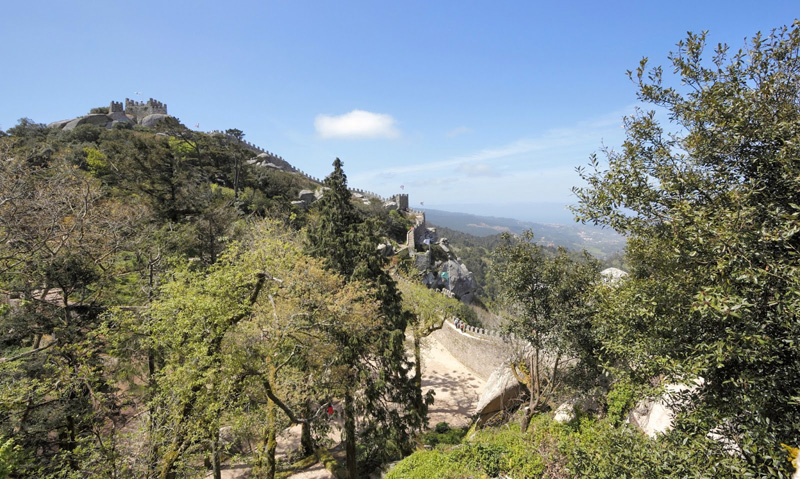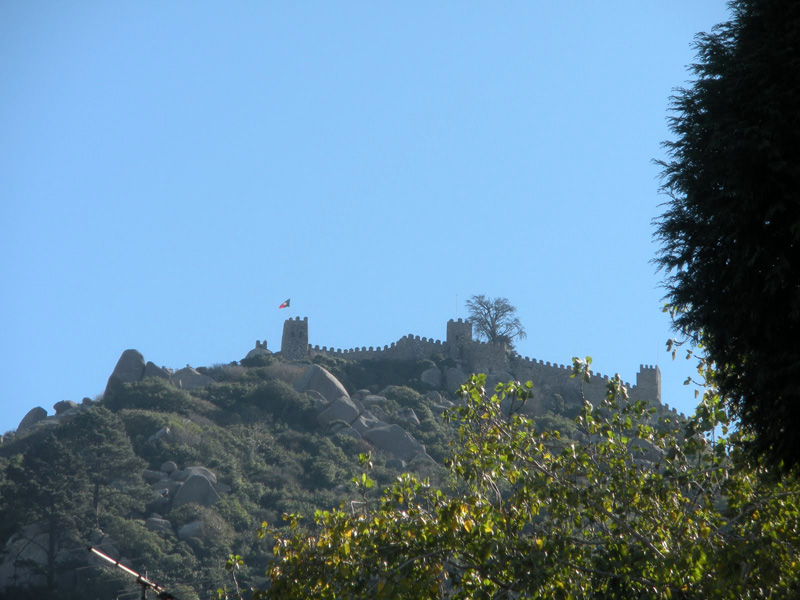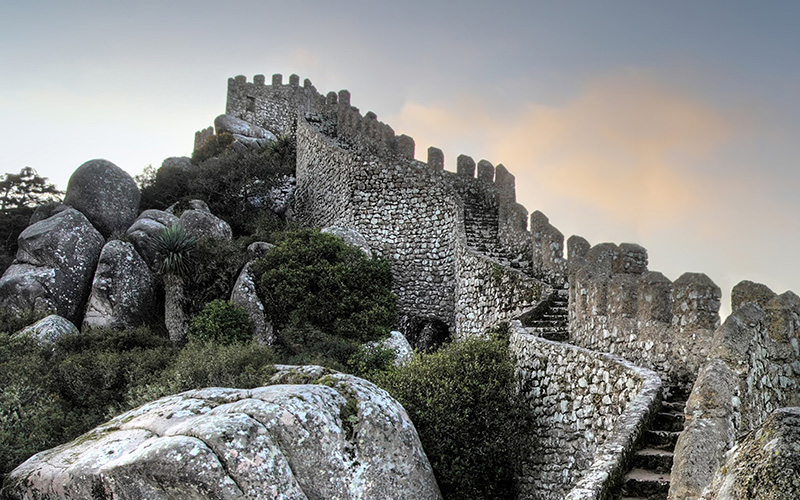
The Moorish Castle is a privileged viewpoint to admire the view extending from Sintra to the ocean. Winding across two ridges on the Sintra Mountains, the castle dates back to the early days of Moorish occupation in the Iberian peninsula, in the 8th century.
After the conquest of Santarém, King Afonso Henriques sieged Lisbon for three months.
Although Sintra’s Castle was surrendered voluntarily after the fall of Lisbon, legend has it that the sovereign entrusted Don Gil, a Knight Templar, with assembling twenty trusted men to secretly observe the enemy's movements in Sintra, in fear of a surprise attack on his forces by the Sintra Moors, and simultaneously preventing the Lisbon Moors from heading up the River Tagus into Sintra, via Cascais.
The crusaders set out in secret, under the cover of night and hiding out during the day, to avoid being sighted along the road from Torres Vedras to Santa Cruz, and along the coast to Colares, avoiding Albernoz, a feared Moorish chief from Colares who was infamous for killings Christians. Somewhere between Colares and Penedo, the Virgin Mary appeared to the fearful knights and said to them: "Não tenhais medo porque ides vinte, mas mil ides” ["Do not be afraid, there are twenty of you, but you are worth one thousand"].
Full of courage with the Virgin Mary on their side, at the end of five day journey, they took on the enemy, defeating them and conquering the Moorish Castle. In honour of this victory, the Chapel of Our Lady of Milides ("mil ides") [“worth one thousand”] was erected in Colares.
History
Strategically built atop one of the highest peaks on the hill range, the castle stood noble and splendid on an large granite outcrop, which acted as an insurmountable natural defence to the north.
Structurally, the fortification has a double curtain wall (the outer wall is now partially destroyed). Its irregular layout covers approximately 12 000 m2. Inside, we can find the ruins of structures for storing cereals, stables, and a rectangular cistern, 18 meters long by 6 meters wide. At the northernmost end, concealed in the curtain wall among brambles and other vegetation, lies the famous Gate of Betrayal.
For some centuries, lack of maintenance allowed the curtain wall to be taken over by trees and bushes, and even to collapse in places. Shepherds and cattle became the attentive guards of the rundown old fortress. However, the turn of 19th century, with the arrival of Romantic Aesthetics, brought a change of fortune for the "Moorish Castle".
Once again, the sensitive, enlightened spirit of King Fernando II was of vital importance, in the recovery of the castle. The ruined architectural nooks covered by native vegetation were much appreciated during this period.
However, King Fernando II was determined not to let what little was left of the fortress disappear. Thus, around the middle of the century, he instructed Baron von Eschewege to proceed with the restoration and consolidation of the curtain walls and towers, returning the silhouette of the "Moorish Castle" to the Luxurious Sintra landscape.
The Artist King ordered the entire area surrounding the walls forested on both sides. Today, about one hundred and fifty years later, we are delighted and left breathless at the sight of the green, brown, orange, and yellow hues of the deciduous leaves.
Opening hours and prices:
https://www.parquesdesintra.pt/en/plan-your-visit/opening-times-and-prices/
Moorish Castle
Estrada da Pena
2710-609 Sintra
GPS: 38°47'33.2"N 9°23'21.5"W
Tel.: (+351) 21 923 73 00/ 21 923 73 36
Fax. (+351) 21 9237350
E-mail: This email address is being protected from spambots. You need JavaScript enabled to view it.
This email address is being protected from spambots. You need JavaScript enabled to view it..pt
Site: www.parquesdesintra.pt



